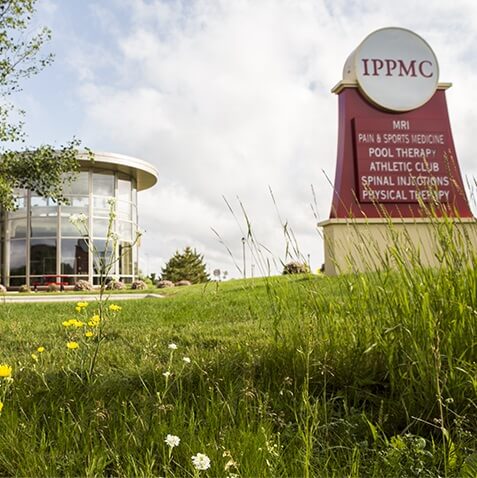What is chronic back pain?
Chronic back pain is an extremely common musculoskeletal disorder. It can range from annoying to debilitating, and treatment options vary accordingly. The causes of back pain are numerous, but they break down into spinal and non-spinal categories. Spinal causes include pain resulting from injured discs, joints, nerves, muscles, or bones of the spine. Non-spinal causes include pain from abdominal organs, infection, metabolic syndromes, and psychological disorders. Risk factors for back pain are numerous and include genetics, smoking, posture, intense physical activity, and work conditions. Immediate medical attention should be sought if back pain is severe and continuous or associated with progressive leg weakening, severe fever or chills, and/or sudden incontinence, as these may be signs of a more serious disorder.
How is a cause of my pain determined?
The cause of an individual's pain is determined through a careful history, physical examination, and diagnostic testing. Serious causes of lower back pain should be ruled out depending on the patient's signs and symptoms.
Diagnostic testing usually consists of radiographic imaging such as plain x-rays, MRI scans, quantitative sensory testing, targeted diagnostic nerve blocks. In most cases, a combination of tests are required for a specific diagnosis. Consistent, reproducible relief from specific targeted nerve blocks is often the best way to determine the site of the patient's pain.
What treatments are available for low back pain?
Treatments for back pain include anti-inflammatory medications, physical therapy, IDET, spinal manipulation, nerve blocks, electrical stimulation, prolotherapy, biofeedback, and more. In severe cases spinal surgery can be considered.
How does one decide the best treatment for me?
After determining that there are no potentially serious causes for lower back pain, several factors need to be taken into consideration. The intensity and degree to which the pain interferes with your life will help determine the course of action. Patients with minimal and occasional pain may do well on anti-inflammatory medications and home exercises. Patient that have already tried physical therapy, spinal manipulation, anti-inflammatory medications and continue to have significant pain usually require a more targeted approach to their treatment.
Why can't I just take a pain killer?
Medical management is certainly an important part of pain therapy. Non-narcotic medications such as anti-inflammatories, low dose antidepressants, and other agents that act on nerves are considered first line treatment in the medical management of chronic pain. Potent narcotic medications may also be used when in conjunction with other treatments such as nerve blocks and physical therapy. However, narcotic medication should not used in place of specific nerve blocks, specific treatments, physical therapy and other rehabilitative modalities in the treatment of chronic pain. The use of narcotics for chronic pain is often not effective or results in continued dose escalation when used without other treatment. Narcotics are indicated in chronic lower back pain only when all other reasonable modalities have failed. In addition, patients on chronic oral narcotics are expected to be actively involved in a stress management program with a psychologist or psychiatrist.
Is there any advantage in the combining treatments?
Yes. In most cases the treatment of chronic lower back pain necessitates multiple modalities. Nerve blocks can afford patients the greatest advantage when they are combined with rehabilitative modalities such as physical therapy or joint mobilization. Likewise, it is difficult to undergo physical therapy or joint mobilization when the patient has inadequate pain control. It is very difficult to treat chronic pain with approach alone.
What information is important to tell my physician about my pain?
It is important for the patient to give a complete history of their pain. In particular, is important to note the location, quality, intensity, and duration of the pain, aggravating factors, whether or not the pain radiates, things that may have caused the pain, the amount of time that one experiences pain during the day or week. Patients should make available x-ray studies, laboratory information, notes of prior treatments, and inform the physician about other serious illnesses, litigation related to pain, and the effect of pain on work and activities of daily living.
Adapted from http://www.milwaukeepain.com


